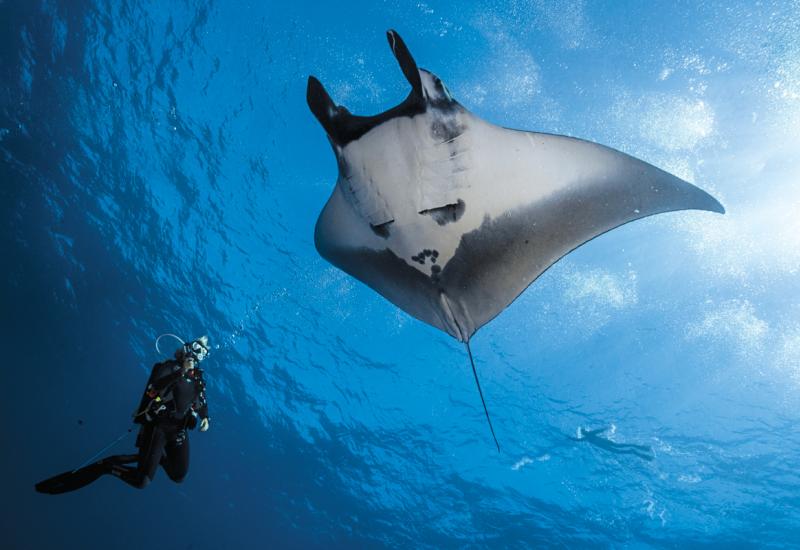How to Dive Mexico’s Socorro Island
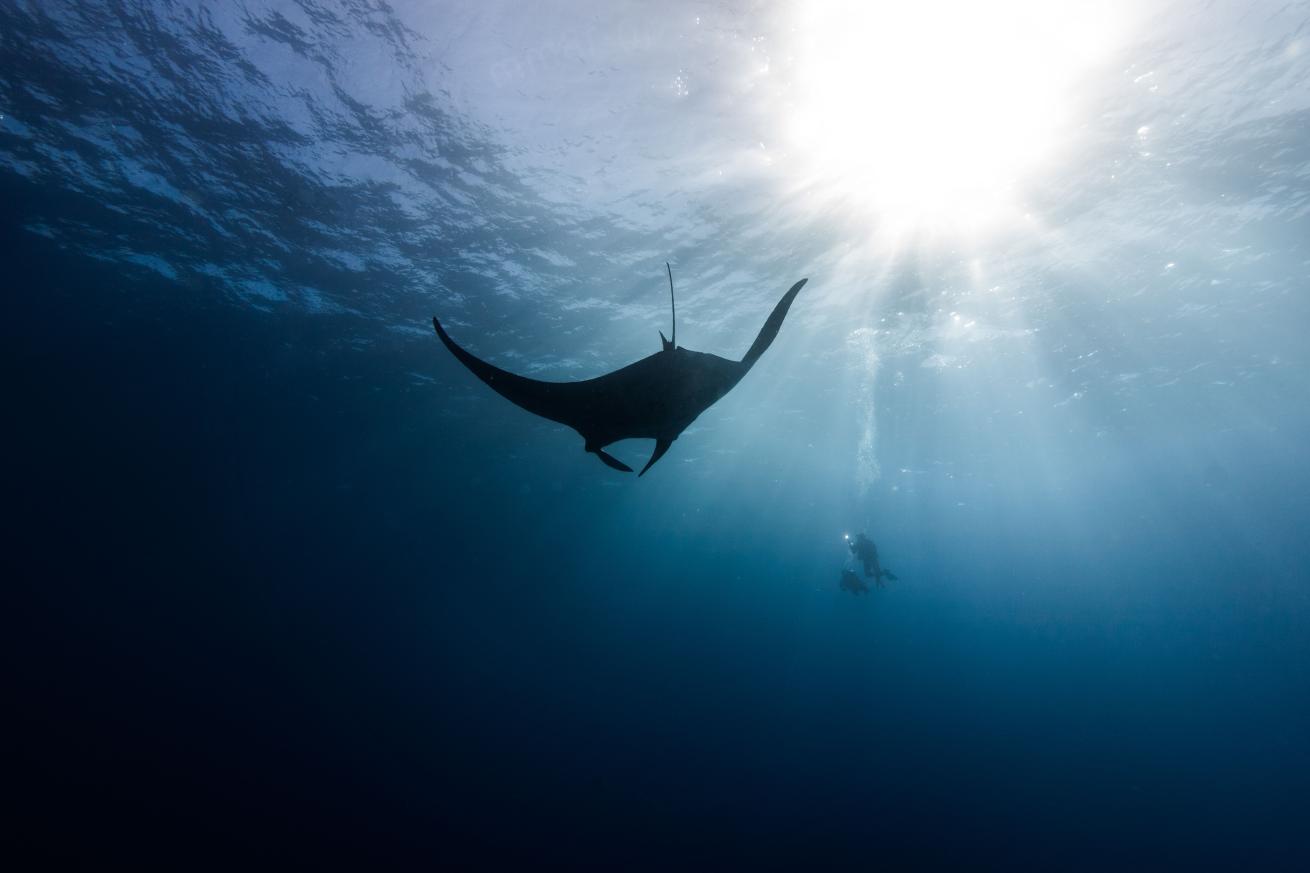
Kristin PaterakisA giant oceanic manta ray gracefully swims overhead.
Dropping into the waters of Mexico’s Revillagigedo Archipelago feels like drinking the shrinking tea in Alice’s Wonderland. Everything is supersized here—the oceanic tuna, the tiger sharks, the mantas, the shark schools, the open blue. Everything dwarfs me and I couldn’t be more delighted.
Take the giant oceanic manta rays, for example. These supersized creatures have a wingspan of 30 feet and can weigh well over 6,000 pounds. With stats like that paired with the fact they don’t shy away from divers, you can quickly see how these unique pelagic animals pull travelers from around the world to these remote waters.
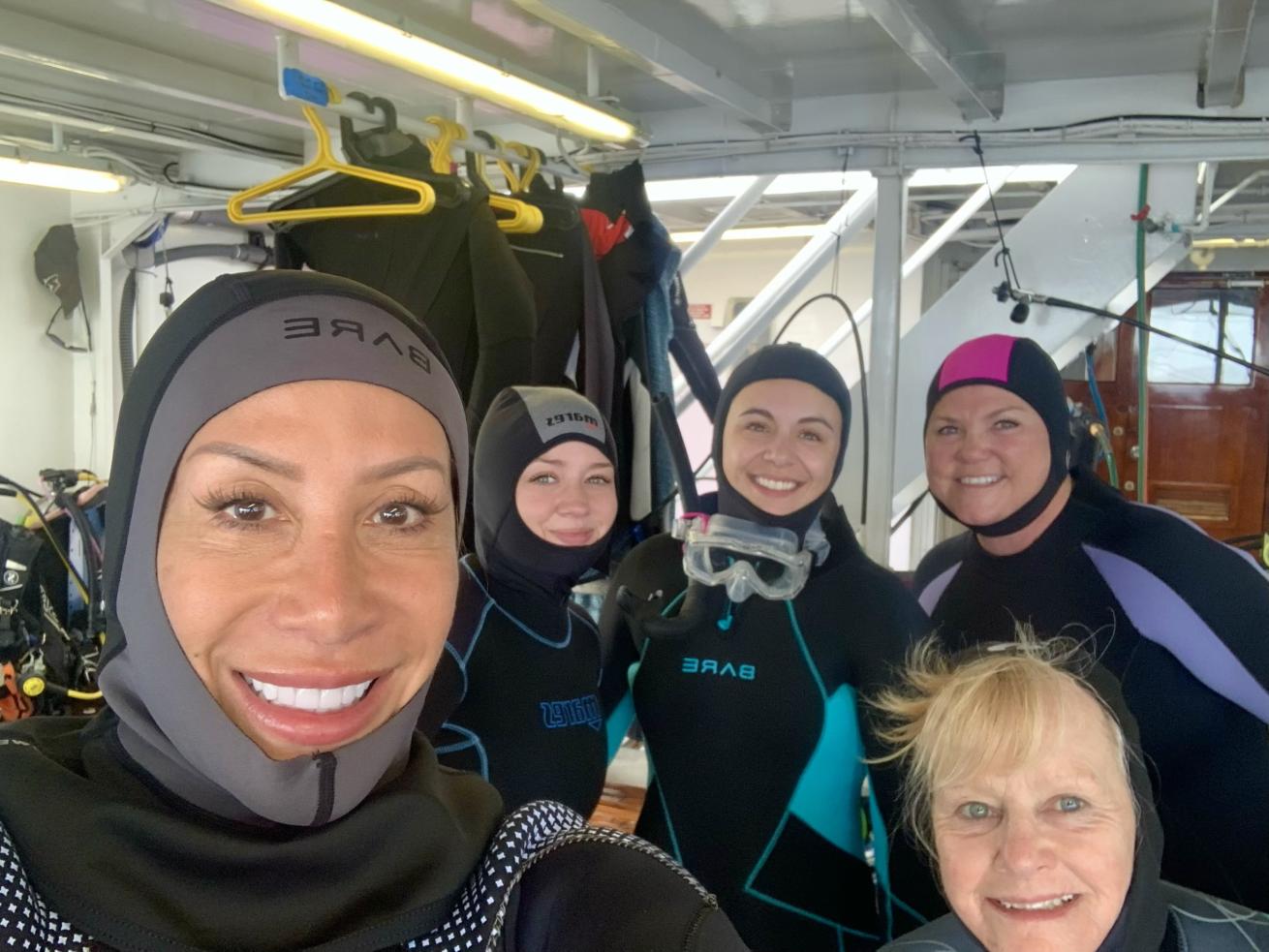
Courtesy Yvonne RichardsonThe author, Alexandra Gillespie (center), poses with members of the United Airlines Dive Club aboard the Nautilus Explorer during a liveaboard trip to the Revillagigedo Archipelago.
The Revillagigedo Archipelago—commonly known as the Socorro Islands—is a remote group of four volcanic islands in the Pacific Ocean about 250 miles southwest of Cabo San Lucas, Mexico. This UNESCO World Heritage Site is also within North America’s largest marine protected area, which was established in 2017.
Here are five sites worth maxing your bottom time, including what you might encounter and how to get there.
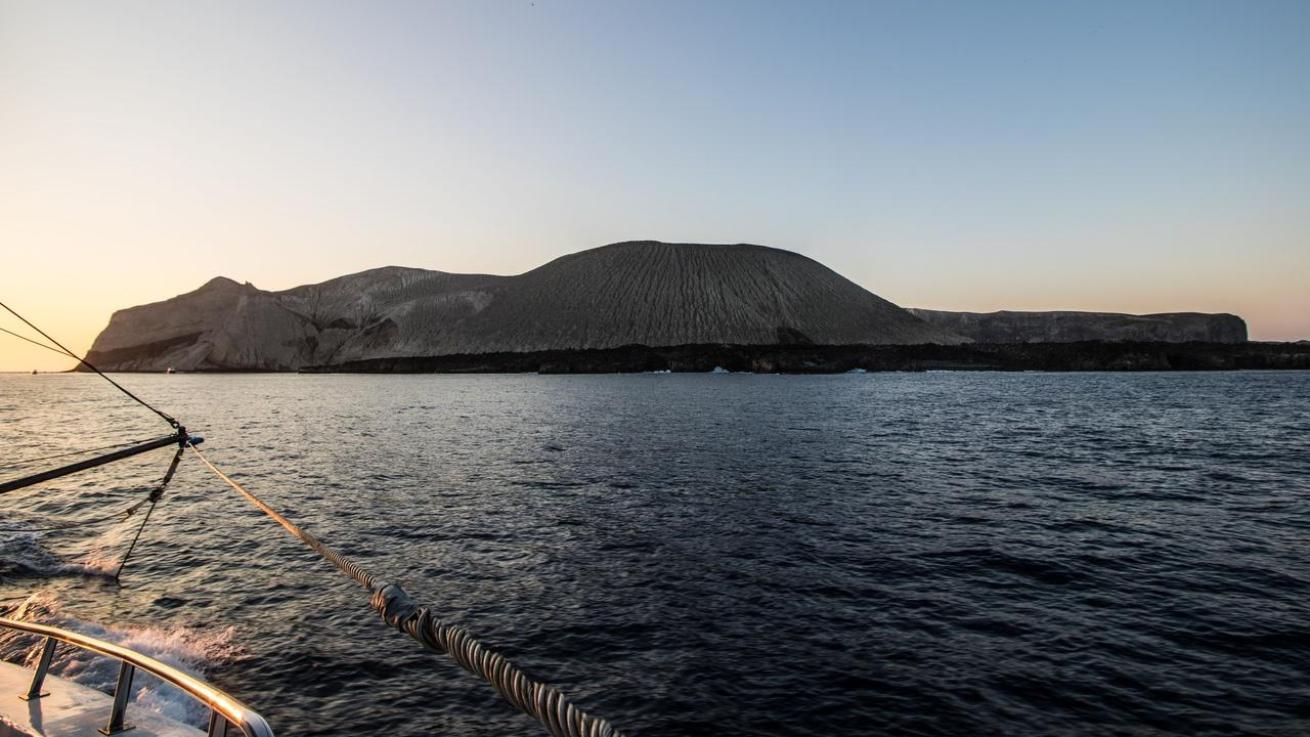
Kristin PaterakisSan Benedicto Island
El Cañón, San Benedicto Island
To see the action at this cleaning station, we drop to about 75 feet. Giant oceanic manta rays frequently come by for little piscine R&R. Sharks are known to frequent the rocks as well—my group spots a group of blacktips, a silky and five hammerheads that swim repeat circuits around us. (In a friendly way, I promise.) In between major encounters, we look for giant Pacific octopuses and eels.
Cabo Pearce, Socorro Island
“Mantas are guaranteed today,” our dive guide says before we drop into the water. Descending to about 70 feet allows us to fin along a rock wall—avoiding the brunt of the current—until reaching a dip where they swim onto the top of the formation while still protected. From here, they settle behind a raised rock lip—this provides the coverage required to hover at the cleaning station without fighting the current.
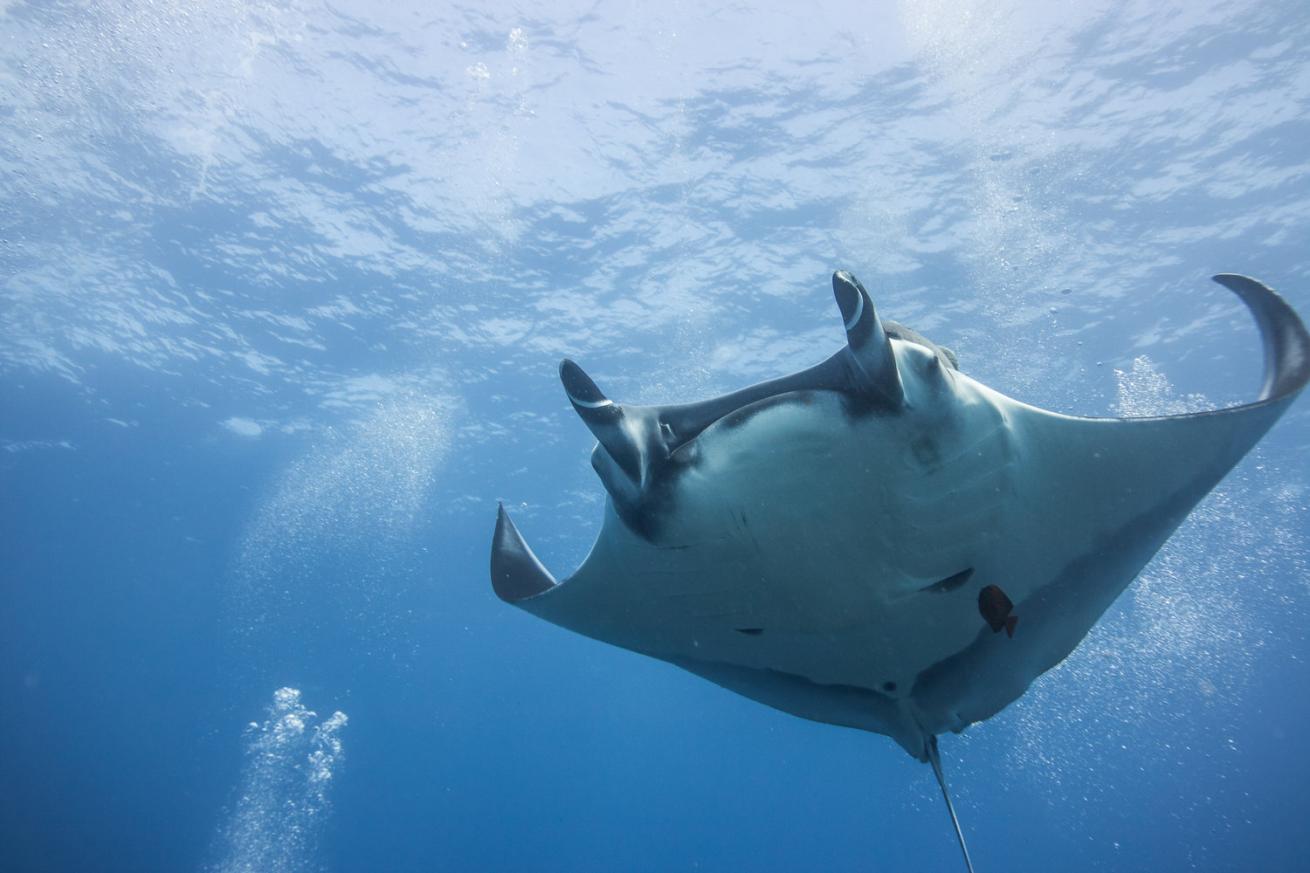
Kristin PaterakisDivers come from around the world to swim with the majestic manta rays.
When the promised mantas do arrive, they treat hovering divers to an incredible show as they arc overhead with majestic grace. Three mantas swoop past us, one by one, with their dedicated cleaning crews in tow. Far from being bothered by our presence, multiple rays swooped down low to feel our bubbles on their immense underbellies. In between sightings, we look for octopuses and inspect the submerged World Heritage Site plaque.
Related Reading: Why We’re Suckers for Becoming an Octopus’s Student
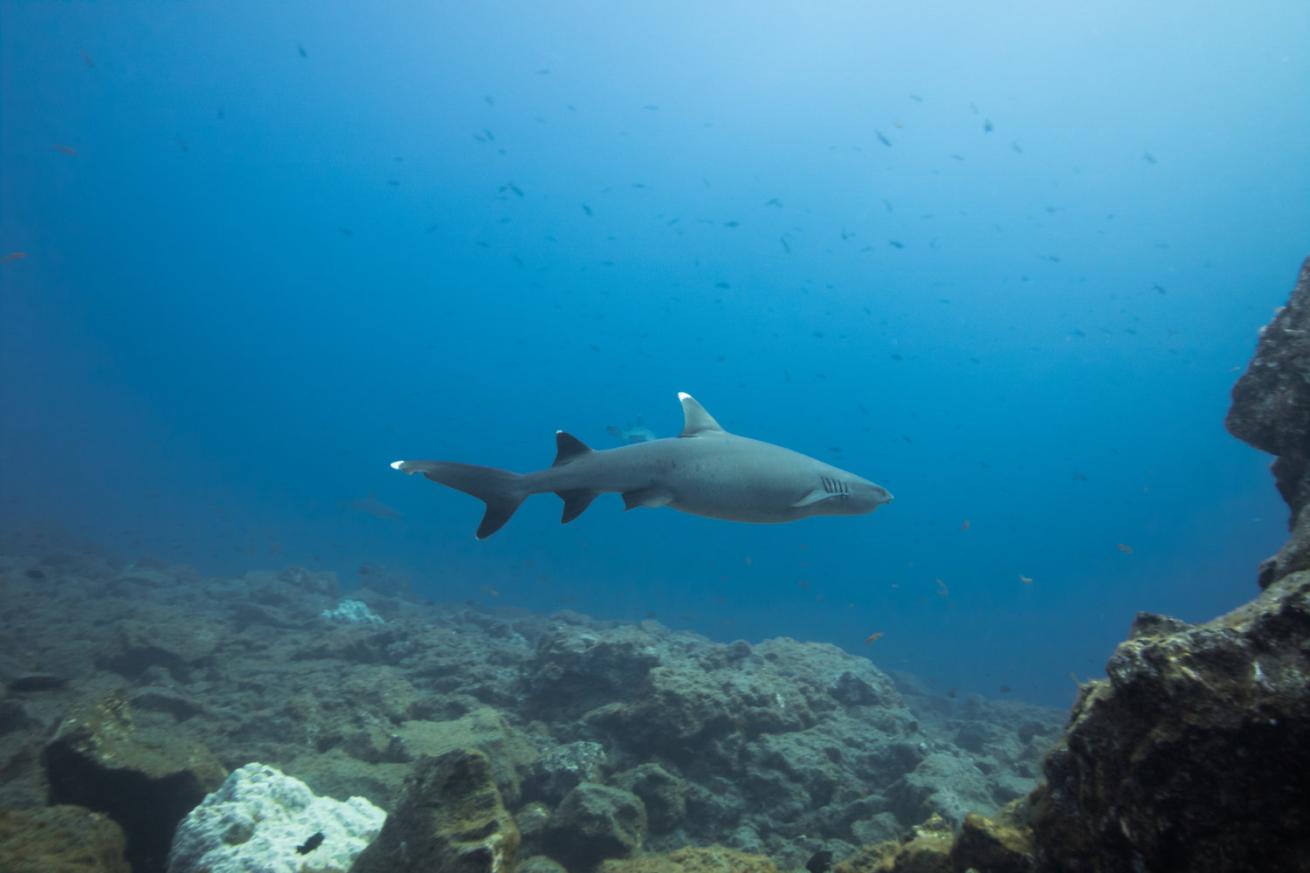
Kristin PaterakisA whitetip reef shark cruises in the current.
Punta Tosca, Socorro Island
This reef dive adds a nice variety to an itinerary that’s heavy on the blue—but that doesn't mean pelagic sightings are off the table. Two long arms of hardened lava extend from the island’s shore extend from the island’s shore into the water, forming a semi-protected cove in between. Divers can choose to dive between the two outcroppings or along the perimeter of the inlet if they want to look for large animals. Dolphins are known to frolic among the lava fingers, along with plenty of whitetips and lobsters.
I have not one but two action-packed interactions at Punta Tosca. On our second dive, as we trace the outside and gaze into the blue, a large shadow looms out from the blue. A broad, toothy face slowly comes into focus. My heart nearly stops when the shark jerks to the side, revealing a 10-plus foot body coated in the telltale stripes of a tiger shark. Later that same day, a chain of three mantas dance into view, swirling around each other like ballerinas. For nearly 10 minutes, we hover in awe as they cavort above in an ancient rhythm.
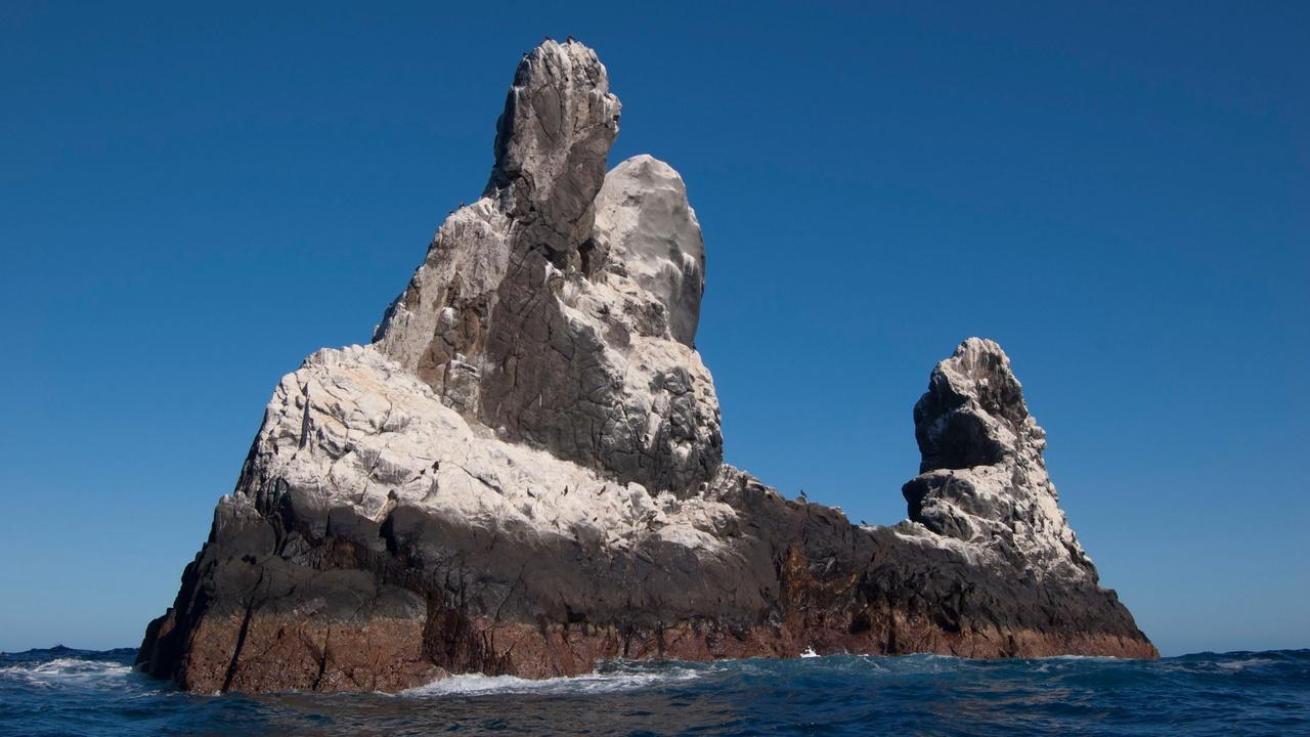
Kristin PaterakisRoca Partida Island
Roca Partida
Pelagic lovers, buckle your BCDs. The most remote island in this chain may not look like much above the water, just a volcanic turret swarmed by birds and covered in guano, but it wows just below the surface.
As the first formation many animals come upon after soaring on Pacific currents, Roca Partia is a hotbed of activity. The moment after dropping, we find whitetip reef sharks huddled like campfire logs on small ledges along the rugged surface. (The largest cuddle puddle I counted hit 15 sharks.) During my three dives on this day, I fly through a cloud of whitetips and dozens of silkies, stare at green eels, spot a behemoth lobster, fin through a massive school of jacks and learn how stately an oceanic yellowfin tuna can be.
All of this unfolds against the dramatic backdrop of rock sloping quickly into the ocean and out of site. This stunning topography means we must keep a close eye on our depth gauges, especially if they encounter down currents, to avoid going too deep.
The Boiler, San Benedicto Island
The Boiler is a hydrothermal vent off of San Benedicto Island. It’s also a showstopper site, thanks to all of the animals drawn to the warm, mineral-rich water. Dolphin pods and friendly mantas flock here, and there were multiple times on my dives at The Boiler where I could see both creatures at once.
A male manta gives me the incredible interaction divers dream of when they chart a course this far out. After passing, he slowly loops back in my direction. Arching directly overhead to enjoy the sensation of my bubbles, he keeps looping to say hello again and again. He doesn’t depart until I leave the water, forced to surface by the only thing that could drag me away—hitting my reserve air.
Related Reading: Expert Alex Mustard Shares His Secrets on How to Photograph Dolphins in the Wild
Need to Know
When to Go: The best time of year to dive the Revillagigedo Archipelago is from November to May, as these are the calmest waters, best viz and the time of year with the greatest chance of encountering sharks and rays.
Temps: The water temperature ranges from 82°F in November to 68°F in May.
Viz: Clear days can deliver a viz past 100 feet. Plankton blooms can lower visibility to several dozen feet, but this is what draws in the large animals that make the waters so special.
How to Get There: There are many liveaboards to the Revillagigedo Archipelago, including Nautilus Liveaboards, which offers a nine-day, eight-night expedition from Cabo San Lucas. This includes five days of diving, during which you average four dives a day, and two crossing days ($2,795).
Dive Gear: Depending on the time of year, a 5 to 7 mm wetsuit, hood and gloves are recommended, especially as your core temperature drops throughout a week of intensive diving. Divers should bring a safety marker buoy for skiff pickups or strong currents. As a safety precaution, Nautilus lends each guest a Nautilus Lifeline—a marine rescue GPS—for the duration of the trip.
Recommended Certifications: Due to the strong currents and effectively limitless depth at some sites, this is advanced diving. It is recommended divers have their advanced open water certification as well as the deep diver, drift diver and enriched air (nitrox) diver specialties.

